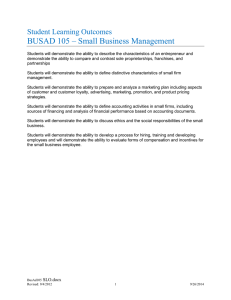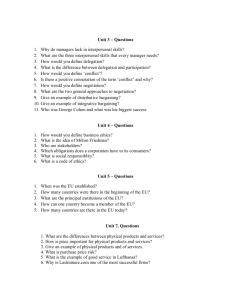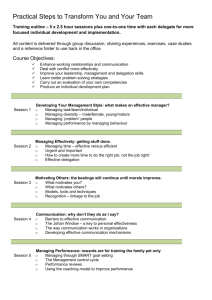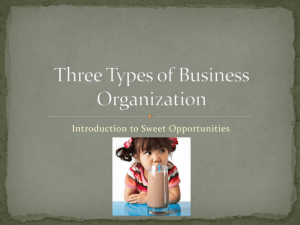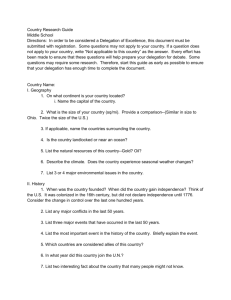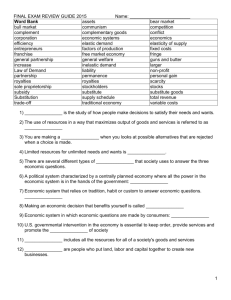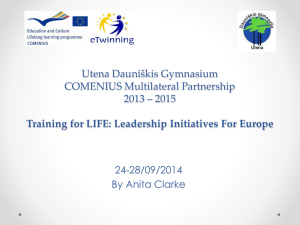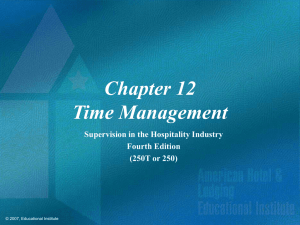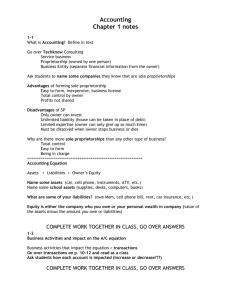Business Practice Quiz: Chapters 1-6
advertisement
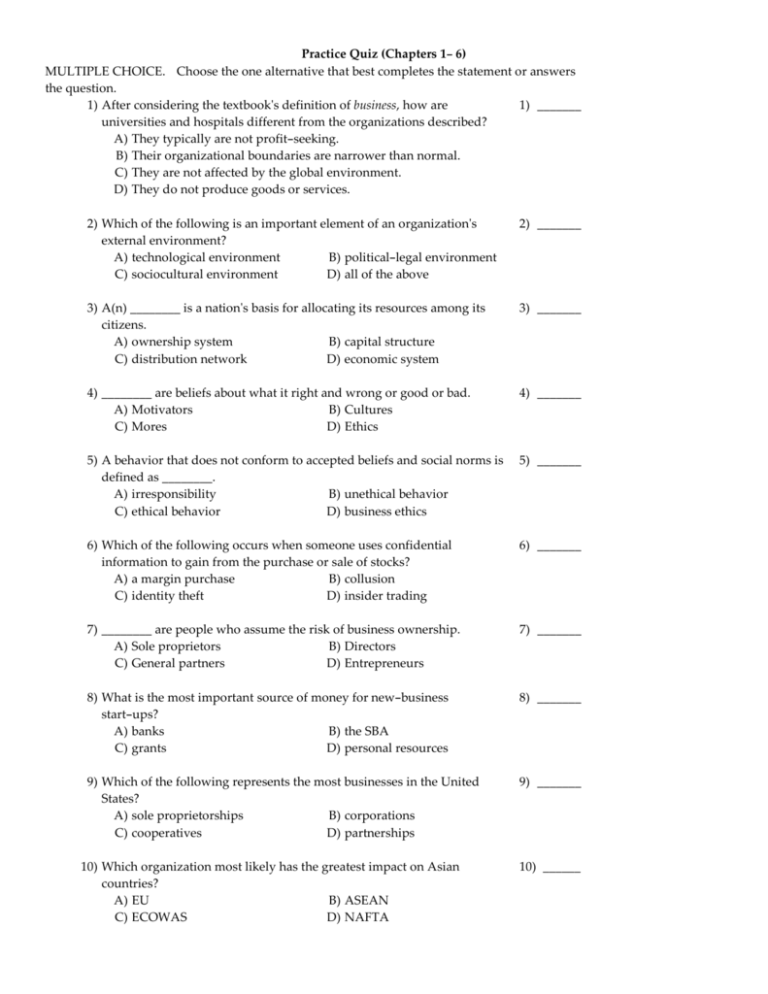
Practice Quiz (Chapters 1- 6) MULTIPLE CHOICE. Choose the one alternative that best completes the statement or answers the question. 1) After considering the textbook's definition of business, how are 1) _______ universities and hospitals different from the organizations described? A) They typically are not profit-seeking. B) Their organizational boundaries are narrower than normal. C) They are not affected by the global environment. D) They do not produce goods or services. 2) Which of the following is an important element of an organization's external environment? A) technological environment B) political-legal environment C) sociocultural environment D) all of the above 2) _______ 3) A(n) ________ is a nation's basis for allocating its resources among its citizens. A) ownership system B) capital structure C) distribution network D) economic system 3) _______ 4) ________ are beliefs about what it right and wrong or good or bad. A) Motivators B) Cultures C) Mores D) Ethics 4) _______ 5) A behavior that does not conform to accepted beliefs and social norms is defined as ________. A) irresponsibility B) unethical behavior C) ethical behavior D) business ethics 5) _______ 6) Which of the following occurs when someone uses confidential information to gain from the purchase or sale of stocks? A) a margin purchase B) collusion C) identity theft D) insider trading 6) _______ 7) ________ are people who assume the risk of business ownership. A) Sole proprietors B) Directors C) General partners D) Entrepreneurs 7) _______ 8) What is the most important source of money for new-business start-ups? A) banks B) the SBA C) grants D) personal resources 8) _______ 9) Which of the following represents the most businesses in the United States? A) sole proprietorships B) corporations C) cooperatives D) partnerships 9) _______ 10) Which organization most likely has the greatest impact on Asian countries? A) EU B) ASEAN C) ECOWAS D) NAFTA 10) ______ 11) Which of the following buys products in foreign markets and then sells them for resale in its home country? A) exporter B) importer C) international firm D) direct investor 11) ______ 12) The world's largest economy is ________. A) the United States B) China C) Germany D) India 12) ______ 13) The manager uses which of the following management processes to guide and motivate employees to meet the firm's objectives? A) producing B) leading C) controlling D) planning 13) ______ 14) Skills in understanding and getting along with other people are called ________. A) technical skills B) conceptual skills C) motor skills D) human relations skills 14) ______ 15) Objectives that a business hopes (and plans) to achieve are called ________. A) tactics B) goals C) strategies D) actions 15) ______ 16) SWOT analysis allows managers and employees to assess ________. A) internal opportunities B) external weaknesses C) external threats D) external strengths 16) ______ 17) The process of monitoring a firm's performance to make sure that it is meeting its goals is referred to as ________. A) planning B) leading C) organizing D) controlling 17) ______ 18) In a(n) ________ organization, most decision-making authority is held by upper-level managers. A) centralized B) decentralized C) democratic D) free-reign 18) ______ 19) The duty to perform an assigned task is called ________. A) authority B) delegation C) responsibility D) accountability 19) ______ 20) ________ is the assignment of a task, responsibility, or authority by a manager to a subordinate. A) Centralization B) Responsibility C) Delegation D) Decentralization 20) ______ Answer Key - Practice Quiz 1 1) A 2) D 3) D 4) D 5) B 6) D 7) D 8) D 9) A 10) B 11) B 12) A 13) B 14) D 15) B 16) C 17) D 18) A 19) C 20) C
